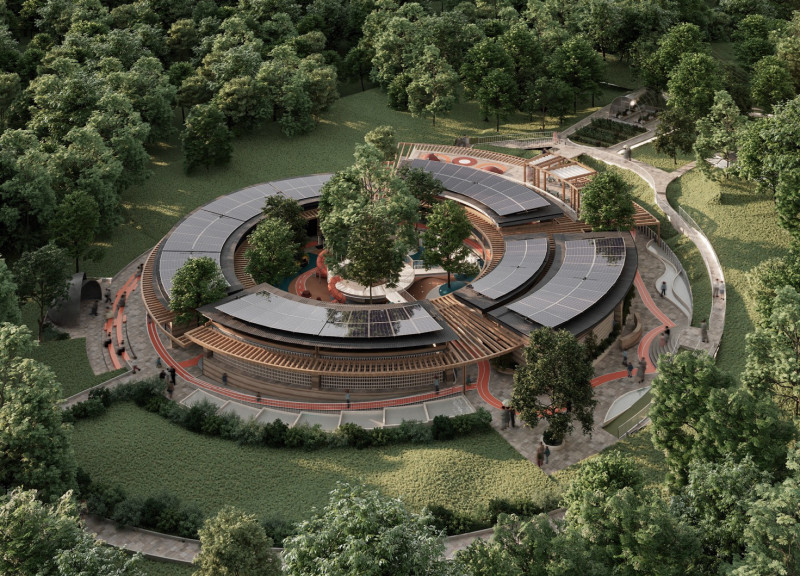5 key facts about this project
**Location and Concept Overview**
Located in Ibagué, Colombia, the Sense Forest is designed as an educational and social hub that emphasizes sensory engagement and the integration of natural elements into the learning environment. By employing biophilic principles, the design aims to harmonize educational outcomes with community interaction, establishing a facility that supports both formal learning and informal social exchanges.
**Spatial Strategy and Learning Methodology**
The layout features a circular form that promotes smooth circulation and fosters interaction among users, symbolizing unity and inclusiveness. Diverse programmatic elements—such as classrooms, communal areas, and play zones—are organized within this circular layout to facilitate structured learning alongside collaborative activities. The design centers around a sensory learning methodology, targeting six senses: sight, touch, sound, smell, taste, and movement. Classrooms and activity areas are strategically placed to maximize exposure to natural light and fresh air, enhancing cognitive functions and well-being.
**Materiality and Sustainability Initiatives**
The project utilizes a range of natural and sustainable materials, including wood for structural elements, concrete for stability, and glass to increase transparency and natural lighting. Steel provides flexibility in design, while bamboo is considered for its strength and sustainability attributes. To support environmental stewardship, the plan incorporates renewable energy sources such as solar panels and water management systems, including rainwater harvesting and greywater recycling. Extensive landscaping features green roofs and walls that enhance biodiversity and air quality, alongside outdoor spaces designed to stimulate sensory interactions through various natural elements.



















































